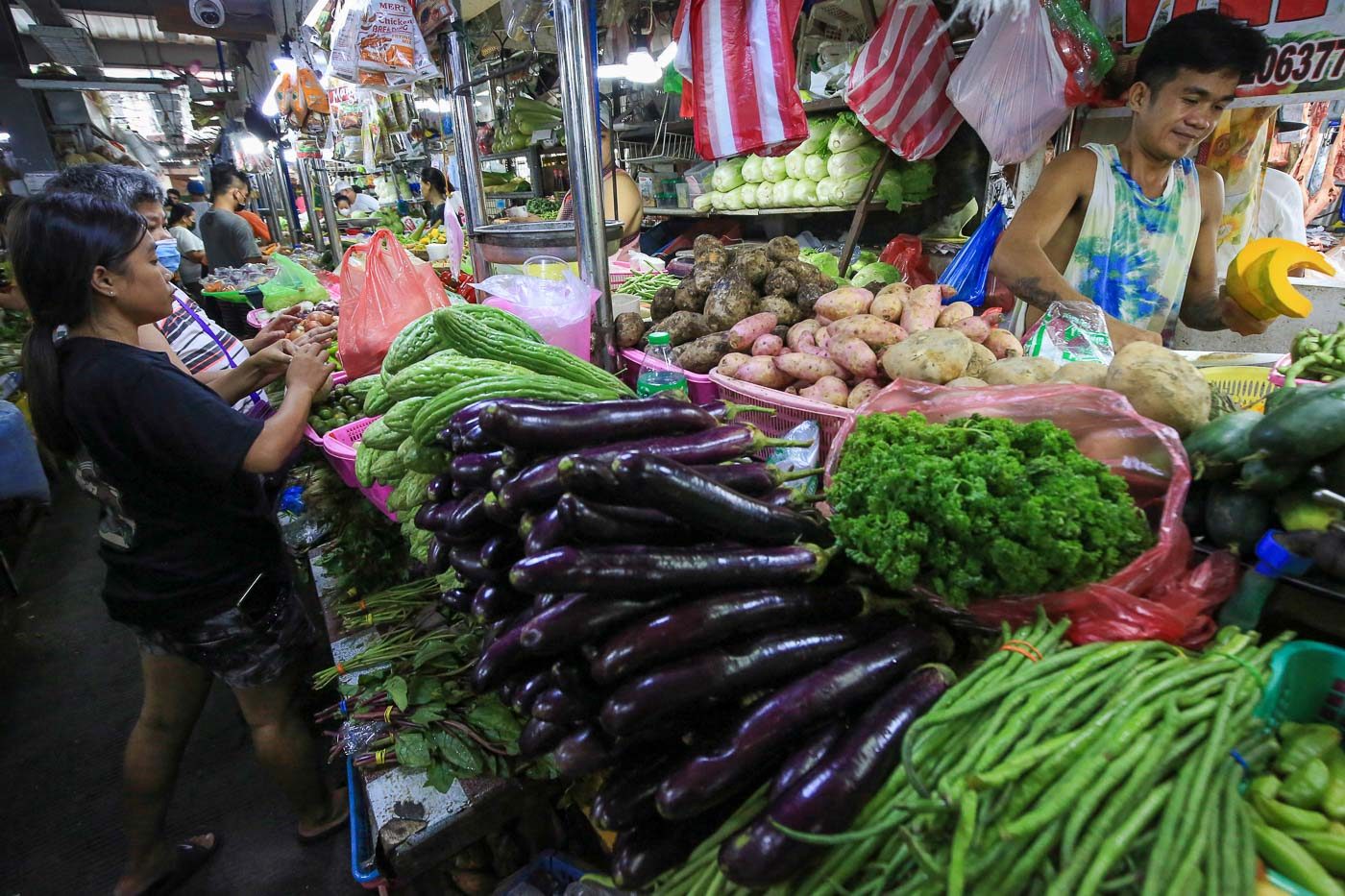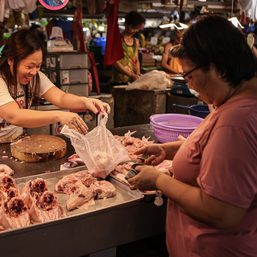SUMMARY
This is AI generated summarization, which may have errors. For context, always refer to the full article.

MANILA, Philippines – The Philippines’ inflation rate slightly went up to 3.4% in February, as food prices and utility costs inched up during the month.
The latest figure reported by the Philippine Statistics Authority on Tuesday, March 5, is higher than the 2.8% reported in January, but lower than the 8.6% last February 2023.
Rice prices continued to accelerate, jumping by 23.7%, the fastest level in 15 years, according to National Statistician Dennis Mapa. Overall food inflation went up to 4.6% from 3.5%.
Transportation costs also went up by 1.2% from -0.3%.
The February 2024 figure is still within the government target range of 2% to 4%.
This is the first increase in inflation after a downtrend for four straight months.
El Niño threat
The National Economic and Development Authority (NEDA) issued a statement shortly after the latest inflation figures were released, noting that the government is intensifying its efforts to mitigate the impact of El Niño on food prices.
“The potential impact of a strong El Niño weather pattern on food prices is a significant concern for our community. Rising transportation costs, electricity rates, and volatile oil markets are putting pressure on household finances…. We must be agile, adaptive, and forward-thinking,” said NEDA Secretary Arsenio Balisacan.
Balisacan said that rice prices in the international market have started to ease, while local supply is expected to increase as harvest season begins in March.
Analysts expect that inflation will remain within target range.
Jean Olivia de Castro, head of fixed income at Manulife Investment Management and Trust Corporation said inflation in the first quarter will likely remain within 2% to 4%, but rice prices will continue to put pressure on the overall figure.
“Upside risks to inflation may stem from elevated rice prices and continued increases in global oil prices. Oil prices have increased over 8% during the first two months of the year due to OPEC supply cuts, conflict in the Middle East, and Houthi attacks on shipping lines in the Red Sea in the past few months,” De Castro said.
De Castro noted that while lower tariff rates and an increase in rice imports would help cap the continued rise in prices, export restrictions remain from India, the world’s biggest supplier.
The Bangko Sentral ng Pilipinas has kept interest rates high at 6.5%.
In a statement on Tuesday, the central bank said it deems it appropriate to keep monetary policy settings unchanged in the near term.
“The risks to the inflation outlook have receded but remain tilted toward the upside,” the BSP said. – Rappler.com
Add a comment
How does this make you feel?




![[In This Economy] Peso approaches P60 per dollar once more. So what?](https://www.rappler.com/tachyon/2024/05/TL-peso-dollar-economy-may-24-2024.jpg?resize=257%2C257&crop=302px%2C0px%2C720px%2C720px)
There are no comments yet. Add your comment to start the conversation.